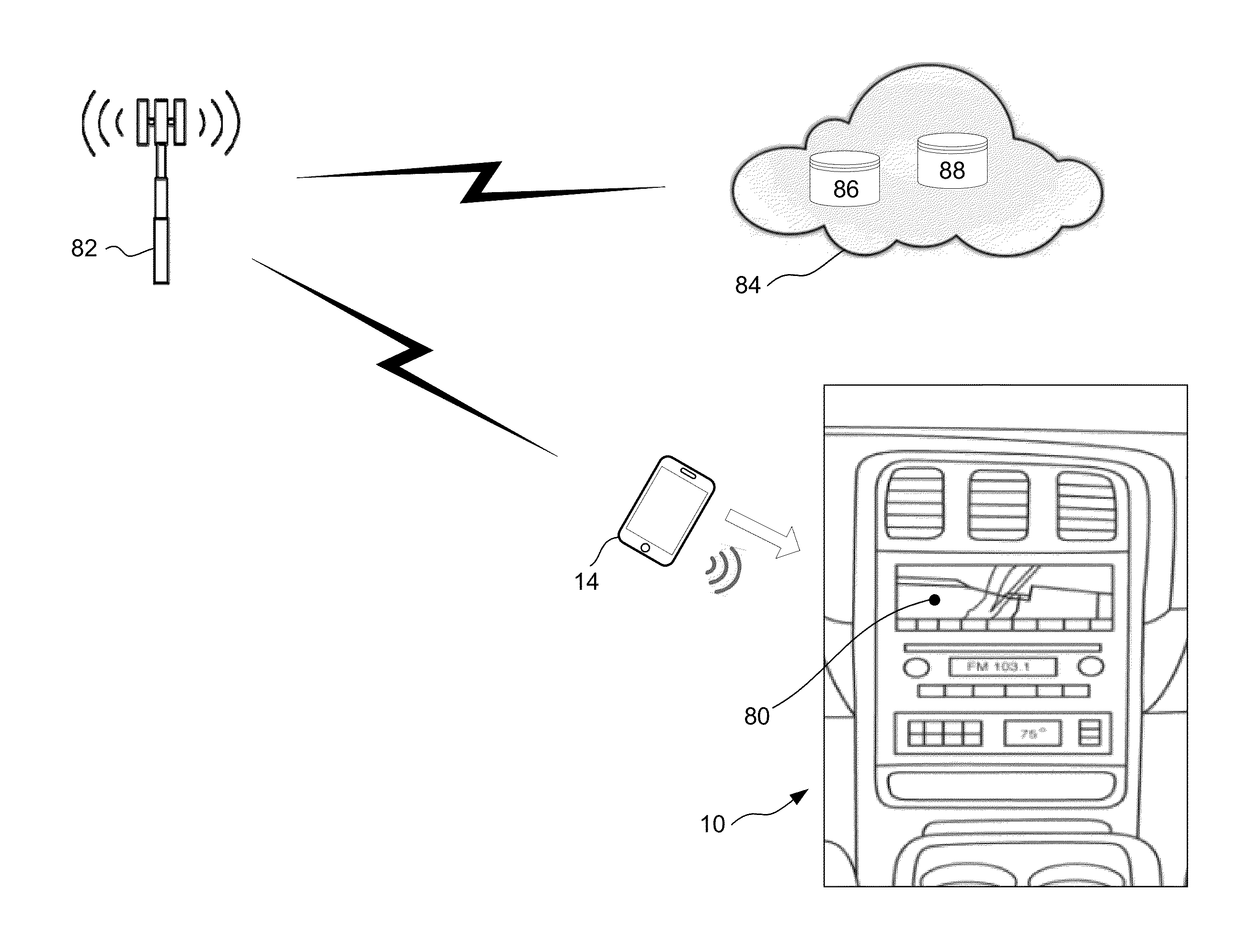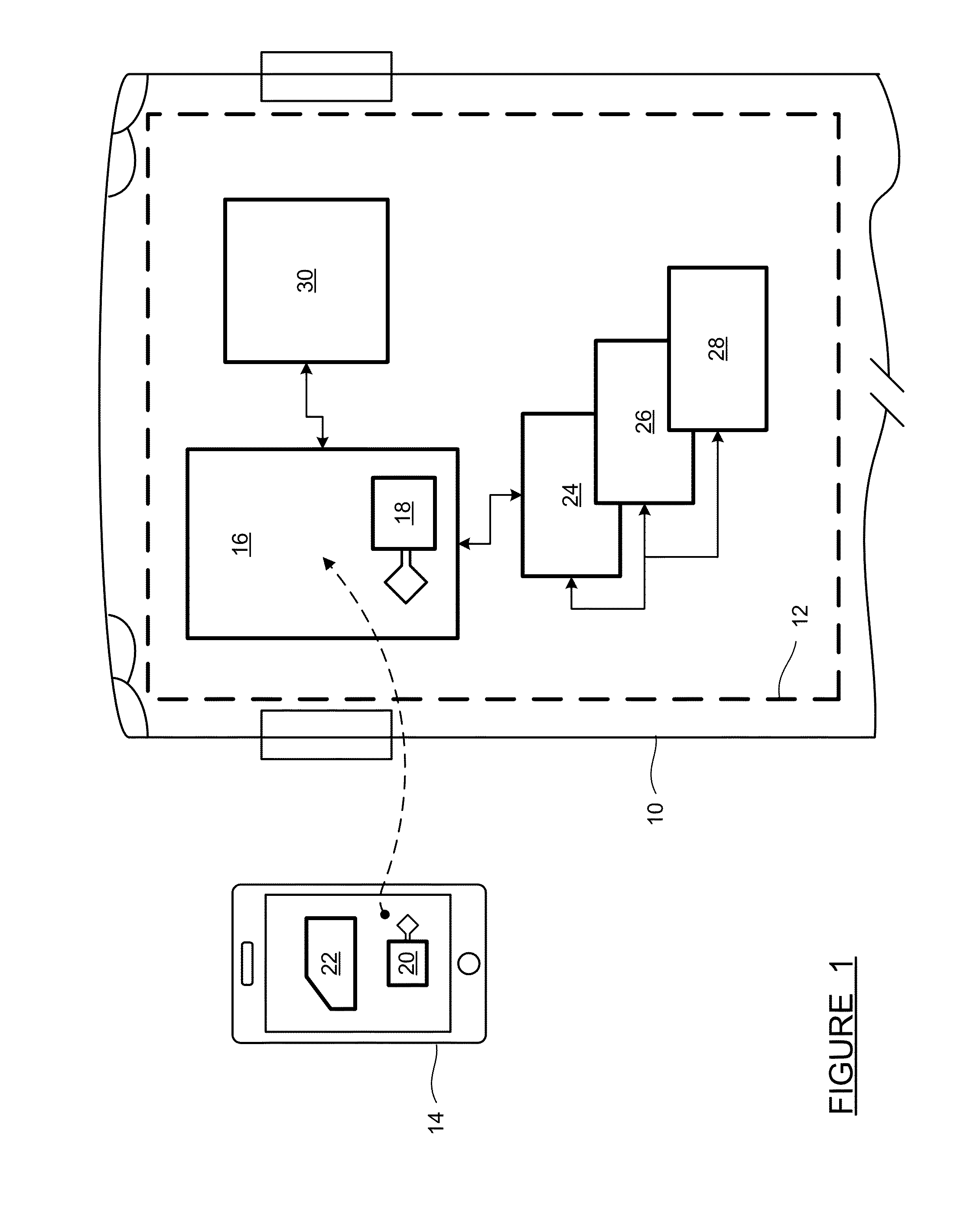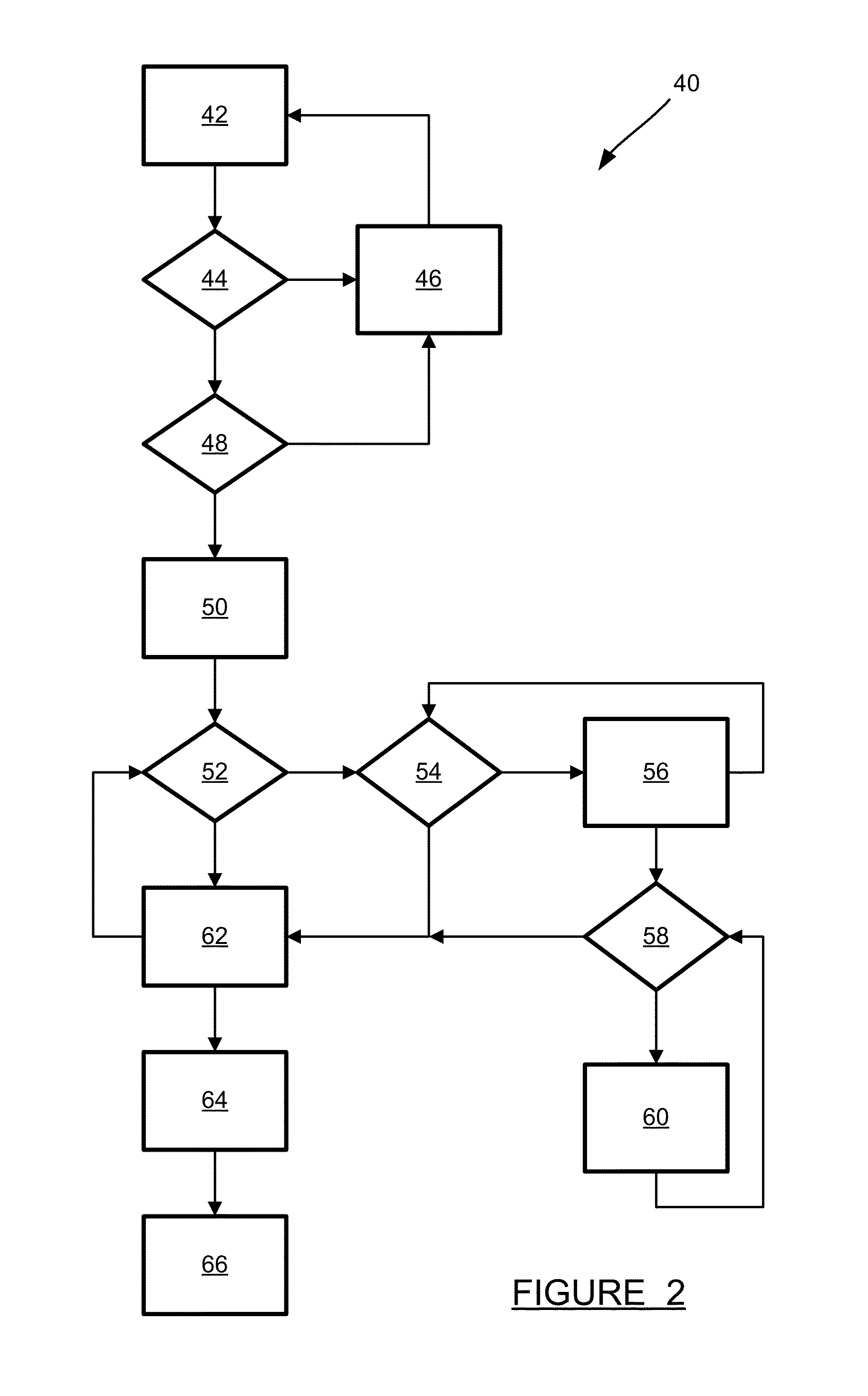Methods of controlling vehicle interfaces using device motion and near field communications
a technology of near field communication and vehicle interface, which is applied in the direction of process and machine control, wireless communication services, instruments, etc., can solve the problems of untapped potential and untrue n
- Summary
- Abstract
- Description
- Claims
- Application Information
AI Technical Summary
Benefits of technology
Problems solved by technology
Method used
Image
Examples
first embodiment
[0051]Gesture-based control can be implemented in several ways, as depicted in FIGS. 5-8. FIG. 5 is an illustration of gesture-based control of a vehicle feature, using the mobile device 14 in conjunction with an NFC tag and Wi-Fi or Bluetooth communications. An NFC tag 130 is placed in the vehicle 10 at a location where the tag 130 is representative of a particular vehicle feature. For example, the NFC tag 130 could be placed in a door of the vehicle 10 where it represents a window opening / closing control. The NFC tag 130 does not communicate with other vehicle systems—it is a standalone tag which includes data identifying it as a window control tag. When the device 14 is passed over the tag 130, the device 14 reads the data from the tag 130 and determines that the driver wishes to invoke a window control. The device 14 then uses its own motion detection sensors, such as gyroscopic sensors and accelerometers, to determine the type of motion that the device 14 was experiencing when ...
third embodiment
[0054]FIG. 7 is an illustration of gesture-based control of a vehicle feature, using the mobile device 14 in conjunction with a vehicle-integrated NFC chip. An NFC chip 142 communicates with a controller 150. The NFC chip 142 is placed in a location appropriate for the system or feature which it represents, such as a window control. When the mobile device 14 is passed over the NFC chip 142, the chip 142 detects an NFC signal from the device 14 and communicates to the controller 150 that a window control is forthcoming. At the same time, the device 14 determines that it has passed over the NFC chip 142, and ascertains that the chip 142 represents a window control. The device 14 uses its own sensors to determine its motion profile, and sends its motion or gesture profile parameters to the chip 142 via NFC. For example, an upward motion indicates that the window is to be closed. The NFC chip 142 passes the window control command along to the controller 150, which executes the command. ...
fourth embodiment
[0055]FIG. 8 is an illustration of gesture-based control of a vehicle feature, using the mobile device 14 in conjunction with multiple vehicle-integrated NFC chips. In this embodiment, NFC chips 144, 146 and 148 communicate with the controller 150. When the device 14 passes over the chips 144-148, each of the chips 144-148 sends a signal to the controller 150 indicating it has been contacted by the device 14. The sequence of the signals from the chips 144-148 indicates not only the system being controlled but also the direction of the control. For example, if the device 14 encounters the NFC chips 144-146-148 in that order, the controller 150 knows that the driver wishes to lock the doors. If the device 14 encounters the NFC chips 148-146-144 in that order, the controller 150 knows that the driver wishes to unlock the doors. In this embodiment, the controller 150 receives all of the information it needs from the NFC chips 144-148. The device 14 does not need to transmit any motion i...
PUM
 Login to View More
Login to View More Abstract
Description
Claims
Application Information
 Login to View More
Login to View More - R&D
- Intellectual Property
- Life Sciences
- Materials
- Tech Scout
- Unparalleled Data Quality
- Higher Quality Content
- 60% Fewer Hallucinations
Browse by: Latest US Patents, China's latest patents, Technical Efficacy Thesaurus, Application Domain, Technology Topic, Popular Technical Reports.
© 2025 PatSnap. All rights reserved.Legal|Privacy policy|Modern Slavery Act Transparency Statement|Sitemap|About US| Contact US: help@patsnap.com



